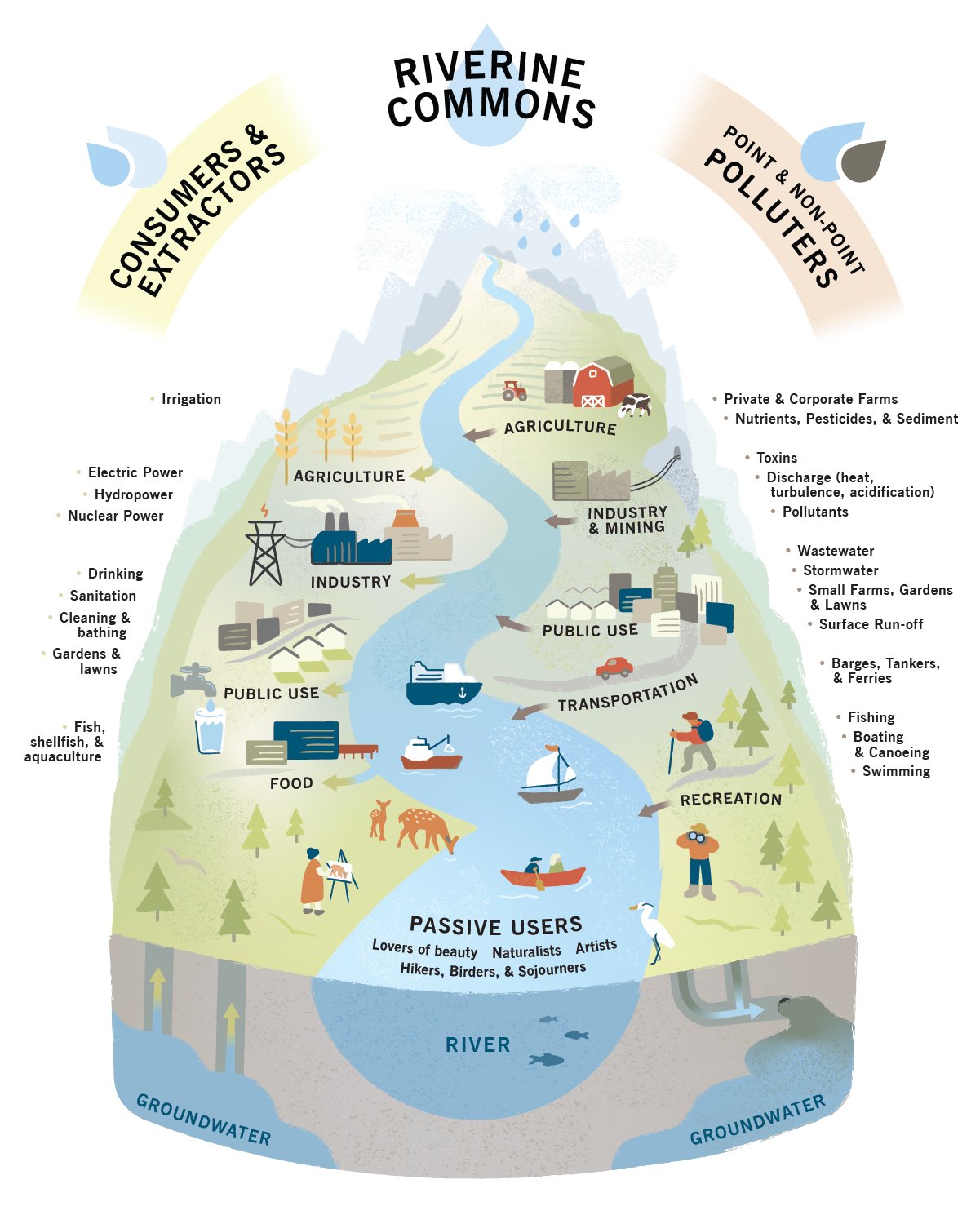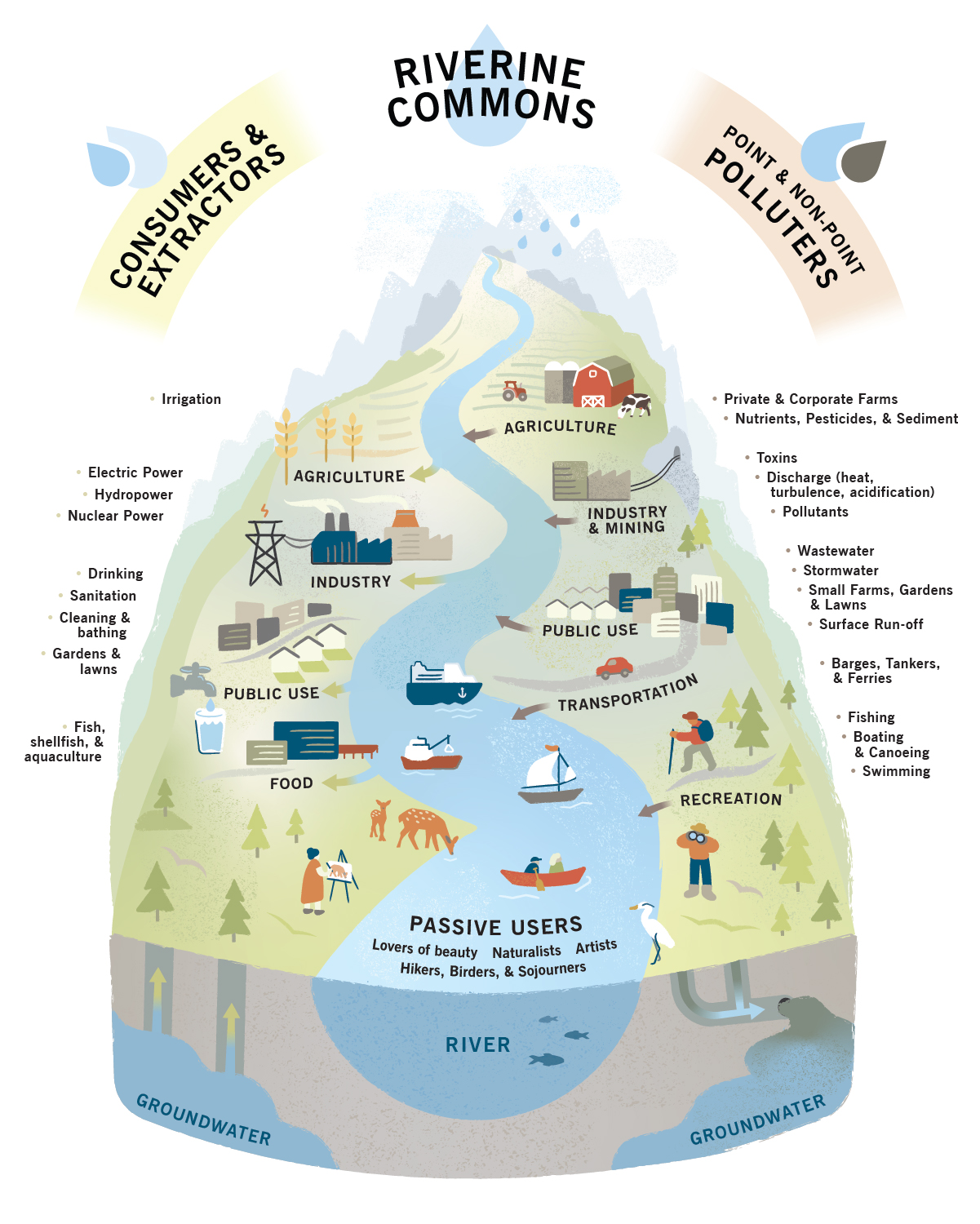
The Tragedy of the Commons: Solving Shared Resource Dilemmas for a Sustainable Future
Imagine a beautiful, lush park in the middle of a bustling city. It’s a shared space, open to everyone. People love to walk their dogs there, have picnics, or simply enjoy the greenery. But what happens if everyone decides to let their dog off-leash, and no one bothers to pick up after them? Or if every picnicker leaves their trash behind? Soon, the beautiful park becomes a mess, unpleasant for everyone.
This simple scenario illustrates a powerful concept known as The Tragedy of the Commons. It’s a challenge that humanity has faced for centuries, from local fishing grounds to the global climate. But here’s the good news: while the "tragedy" can seem inevitable, it’s far from unsolvable. In fact, understanding this dilemma is the first step towards building a more sustainable and equitable future.
In this comprehensive guide, we’ll dive deep into what the Tragedy of the Commons truly means, why it poses such a significant threat, and, most importantly, explore the diverse and effective strategies we can employ to solve shared resource dilemmas.
What Exactly is The Tragedy of the Commons?
The term "Tragedy of the Commons" was popularized by ecologist Garrett Hardin in his influential 1968 essay in Science magazine. Hardin used the example of a shared pasture (a "common" land) where multiple herders could graze their cattle.
Here’s how the "tragedy" unfolds:
- Shared Resource: The pasture is a common resource, meaning everyone has access to it.
- Individual Incentive: Each herder acts in their own self-interest. Adding one more cow to the pasture brings direct economic benefit to that individual herder (more milk, more meat, more money).
- Diffuse Cost: The cost of adding that extra cow – a tiny bit of overgrazing, slightly less grass for everyone else – is spread out among all herders. It’s barely noticeable to the individual who adds the cow.
- Rational Self-Interest Leads to Ruin: Since the individual benefits greatly and bears only a tiny fraction of the cost, every herder is incentivized to add more and more cows. Each thinking, "If I don’t, someone else will, and I’ll lose out."
- Collective Collapse: Eventually, the pasture becomes overgrazed, barren, and can no longer support any cattle. What was once a valuable shared resource is destroyed, to the detriment of everyone.
In essence, the Tragedy of the Commons describes a situation where individuals, acting independently and rationally in their own self-interest, deplete a shared limited resource, even when it is clear that it is not in anyone’s long-term best interest.
Why is it a "Tragedy"? Understanding the Core Problem
The "tragedy" lies in the seemingly unavoidable path to ruin, even when everyone involved is acting logically from their own perspective. It’s not about malicious intent; it’s about a fundamental mismatch between individual incentives and collective well-being.
Key characteristics that make a resource vulnerable to this tragedy include:
- Non-Excludability: It’s difficult or costly to prevent people from accessing or using the resource (e.g., the air we breathe, the fish in the open ocean).
- Rivalry in Consumption: One person’s use of the resource diminishes the availability or quality for others (e.g., one person’s fish caught means less fish for others, one person’s pollution makes the air dirtier for everyone).
- Open Access: There are no clear rules or effective enforcement mechanisms governing its use.
Real-World Examples of the Tragedy of the Commons:
- Overfishing: Global fish stocks are plummeting as individual fishing boats try to catch as much as possible before others do.
- Air Pollution: Factories and vehicles release emissions into the atmosphere, which is a shared resource. No single entity "owns" the air, so the incentive is to pollute cheaply, leading to poor air quality for all.
- Water Scarcity: In regions with shared rivers or aquifers, individual farmers or cities drawing too much water can deplete the common source, leading to widespread droughts.
- Deforestation: Logging companies may clear-cut forests for short-term profit, ignoring the long-term impact on biodiversity, climate regulation, and local communities.
- Traffic Congestion: Public roads are a common resource. Each driver choosing to use their car for convenience contributes to traffic jams, slowing everyone down.
- Plastic Pollution: The convenience of single-use plastics leads to massive amounts of waste ending up in oceans and landfills, impacting shared ecosystems.
The Good News: Solutions Exist! Solving Shared Resource Dilemmas
While the Tragedy of the Commons highlights a significant challenge, it is by no means an insurmountable one. Humanity has developed and continues to innovate a variety of strategies to manage shared resources effectively and prevent their collapse. These solutions often involve a blend of different approaches, tailored to the specific resource and community involved.
Here are the main categories of solutions:
1. Government and Policy Intervention
Governments play a crucial role in establishing rules, incentives, and enforcement mechanisms for shared resources.
-
Regulation and Quotas:
- What it is: Setting strict limits on how much of a resource can be used or extracted.
- Examples: Fishing quotas (limiting the number of fish caught or fishing days), pollution caps (limiting emissions from factories), water usage permits, hunting limits.
- How it helps: Prevents over-extraction by making it illegal to exceed a certain limit, protecting the resource for future use.
-
Taxation and Fees (Pigouvian Taxes):
- What it is: Imposing a cost on activities that harm the common resource. This "internalizes" the external cost that individual users impose on society.
- Examples: Carbon taxes (making polluters pay for their emissions), congestion charges (making drivers pay to enter busy city centers), plastic bag fees, water usage fees.
- How it helps: Discourages overuse or harmful behavior by making it more expensive, incentivizing more sustainable practices.
-
Privatization:
- What it is: Converting a common resource into private property, giving an individual or a private entity exclusive rights and responsibilities for its management.
- Examples: Selling off public lands, assigning individual transferable fishing quotas (ITQs) to fishers, allowing private companies to manage water resources.
- How it helps: The argument is that private owners have a direct incentive to manage the resource sustainably for their long-term profit, as they bear the full cost of its degradation.
- Considerations: While effective in some cases, privatization can lead to issues of equity, access, and potential monopolies if not carefully regulated.
-
Subsidies and Incentives:
- What it is: Providing financial or other support to encourage sustainable practices or the adoption of alternative technologies.
- Examples: Government grants for renewable energy installation, subsidies for farmers who adopt sustainable agricultural practices, tax breaks for purchasing electric vehicles.
- How it helps: Makes environmentally friendly choices more attractive and affordable, shifting behavior towards resource conservation.
-
Public Awareness and Education Campaigns:
- What it is: Informing citizens about the importance of shared resources and the consequences of their misuse.
- Examples: Campaigns to reduce water usage during droughts, anti-littering campaigns, educational programs about sustainable consumption.
- How it helps: Fosters a sense of shared responsibility and can lead to voluntary behavioral changes.
2. Community and Collective Action (Self-Governance)
Nobel laureate Elinor Ostrom’s groundbreaking work showed that communities often successfully manage common-pool resources without needing heavy-handed government intervention or full privatization. Her research highlighted the power of local self-governance.
Key principles for successful community management often include:
- Clearly Defined Boundaries: The resource and the group of users are well-defined. Everyone knows what the "common" is and who is part of the community using it.
- Rules Tailored to Local Conditions: Rules for resource use are developed by the users themselves, fitting their specific context, culture, and resource characteristics. These aren’t one-size-fits-all solutions.
- Participatory Decision-Making: Users have a say in creating, modifying, and enforcing the rules. This fosters ownership and legitimacy.
- Monitoring and Accountability: There are effective systems (often carried out by the users themselves) to monitor the resource’s condition and users’ behavior. Those who break the rules are identified.
- Graduated Sanctions: Penalties for rule-breaking start small (e.g., a warning) and escalate for repeated offenses. This encourages compliance without being overly punitive.
- Conflict-Resolution Mechanisms: There are accessible and low-cost ways for users to resolve disputes among themselves.
- Recognized Right to Organize: The community’s right to self-organize and create their own rules is recognized by external authorities (like the government).
- Nested Enterprises (for larger systems): For larger resources, multiple layers of governance can be used, with local groups managing sub-parts and higher-level organizations coordinating among them.
Examples of successful community-managed commons:
- Ancient Irrigation Systems: Many historical and contemporary irrigation systems in Nepal, the Philippines, and Spain have been successfully managed by local farmer associations for centuries.
- Swiss Alpine Pastures: Local cooperatives have managed shared mountain pastures for generations, setting rules for grazing, maintenance, and distribution of benefits.
- Lobster Fisheries in Maine: Local lobster fishers have developed informal but effective rules for trap limits, gear marking, and dispute resolution, leading to a relatively sustainable fishery.
3. Technological Innovation
Technology can play a crucial role in either reducing demand on existing resources or helping to manage them more effectively.
-
Resource Efficiency and Substitution:
- What it is: Developing technologies that allow us to use less of a resource or replace it with an abundant alternative.
- Examples: More fuel-efficient cars, LED lighting (using less electricity), water-saving irrigation techniques, renewable energy sources (solar, wind) replacing fossil fuels, plant-based meat alternatives.
- How it helps: Reduces pressure on finite shared resources by decreasing consumption or offering sustainable substitutes.
-
Monitoring and Data Collection:
- What it is: Using technology to track resource health, usage patterns, and compliance with rules.
- Examples: Satellite imagery to monitor deforestation or water levels, sensor networks to detect pollution, smart meters to track energy or water consumption, GPS tracking for fishing vessels.
- How it helps: Provides essential information for informed decision-making, helps enforce rules, and can build trust by providing transparent data.
-
Waste Reduction and Recycling Technologies:
- What it is: Innovations that minimize waste and enable resources to be reused.
- Examples: Advanced recycling facilities, composting technologies, upcycling processes, circular economy models.
- How it helps: Extends the life of materials, reduces the need for new resource extraction, and lessens pollution in shared ecosystems.
4. Education and Mindset Shift
Ultimately, solving shared resource dilemmas requires a fundamental shift in human behavior and values.
-
Promoting Environmental Literacy:
- What it is: Educating individuals from a young age about ecological principles, resource limits, and the interconnectedness of natural systems.
- How it helps: Fosters a deeper understanding and appreciation for the environment, leading to more responsible behavior.
-
Cultivating a Stewardship Ethic:
- What it is: Encouraging individuals to see themselves as caretakers of resources, rather than just consumers.
- How it helps: Promotes long-term thinking, a sense of responsibility for future generations, and a willingness to cooperate for the common good.
-
Shifting from Individualism to Collectivism:
- What it is: Recognizing that our individual actions have collective consequences and embracing the idea that collective well-being often requires individual compromises.
- How it helps: Encourages participation in community-based solutions and support for policies that benefit the common good, even if they impose minor personal inconvenience.
The Path Forward: A Multi-Faceted Approach
There is no single "magic bullet" solution to the Tragedy of the Commons. The most effective strategies often involve a combination of the approaches outlined above, tailored to the specific context, resource type, and cultural nuances of the community involved.
For example, managing a global common like the atmosphere (climate change) requires international treaties (government intervention), technological innovation (renewable energy), and a global shift in consumer behavior (education). Managing a local fishery might involve community-set rules, government-issued licenses, and new fishing technologies.
Key takeaways for successful common resource management:
- Context Matters: What works for one resource or community might not work for another.
- Participation is Key: Solutions imposed from above often fail. Involving resource users in the decision-making process increases buy-in and compliance.
- Adaptability: Rules and management strategies need to be flexible and adaptable as conditions change.
- Trust and Communication: Strong social ties and open communication within a community are vital for successful self-governance.
- Clear Rights and Responsibilities: Users need to understand their rights to use the resource and their responsibilities to maintain it.
Conclusion: From Tragedy to Triumph
The Tragedy of the Commons serves as a powerful reminder of the delicate balance between individual freedom and collective well-being. While the temptation to prioritize short-term personal gain over long-term shared sustainability is ever-present, humanity has demonstrated an incredible capacity to overcome these challenges.
By understanding the dynamics of shared resource dilemmas and thoughtfully applying a combination of robust governance, empowering community action, fostering technological innovation, and cultivating a stewardship mindset, we can transform potential tragedies into triumphs of cooperation and sustainability. The future of our shared planet and its vital resources depends on our willingness to collaborate and build a future where the commons thrive for generations to come.
Frequently Asked Questions (FAQs)
1. Who coined the term "Tragedy of the Commons"?
The concept was popularized by American ecologist Garrett Hardin in his 1968 essay "The Tragedy of the Commons," published in the journal Science.
2. Is the Tragedy of the Commons always about environmental resources?
While often applied to natural resources like fisheries, forests, and the atmosphere, the concept can also apply to other shared resources, such as public roads (traffic congestion), internet bandwidth, or even public reputation (spread of misinformation).
3. Does privatization always solve the Tragedy of the Commons?
Not always. While privatization can incentivize sustainable management by giving an individual a direct stake in the resource’s health, it can also lead to issues of equity (who gets access?), monopolies, or a lack of broader societal benefits if not properly regulated. It’s one tool among many.
4. What is Elinor Ostrom’s contribution to understanding the Tragedy of the Commons?
Elinor Ostrom, a Nobel Prize-winning political economist, challenged the idea that the "tragedy" was inevitable. Her research showed that many communities successfully manage common-pool resources through self-organized governance, without needing privatization or top-down government control. She identified key design principles that enable such success.
5. How can I contribute to solving shared resource dilemmas in my daily life?
You can contribute by:
- Reducing your consumption: Using less water, energy, and material goods.
- Supporting sustainable businesses: Choosing products and services from companies committed to ethical sourcing and environmental responsibility.
- Participating in local initiatives: Joining community gardens, clean-up efforts, or advocating for local environmental policies.
- Educating yourself and others: Spreading awareness about resource conservation and the importance of collective action.
- Voting for policies and leaders who prioritize environmental protection and sustainable resource management.
Related Keywords:
- Common Pool Resources
- Sustainable Resource Management
- Environmental Economics
- Elinor Ostrom Principles
- Resource Depletion
- Collective Action Problem
- Environmental Governance
- Natural Resource Management
- Environmental Sustainability
- Resource Conservation



Post Comment